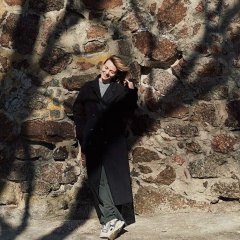Строго говоря, это не арфа, а цитра: у арфы струны перпендикулярны коробу, у цитры — параллельны. Один из самых древних музыкальных инструментов: натянутые струны издают звук под воздействием ветра, а древние греки добавили к струнам резонатор для усиления звука. Возродили это древнее устройство в XVII веке независимо друг от друга Джамбаттиста дела Порта и Афанасий Кирхер (больше известный опытами расшифровки египетских иероглифов). В наши дни инструмент существует как в «монументальном», так и в «портативном» вариантах. Резонатор со струнами был использован в конструкции знаменитой беседки «Эолова арфа» в Пятигорске, где на постаменте в центре ротонды был установлен звучащий короб эоловой арфы. В 1967 году скульпторы Лусия Эймс и Аристид Деметриос соорудили на юге Сан-Франциско эолову арфу высотой 27 метров.
К разновидности эоловой арфы относятся также инструменты, в которых ветер создает звучание не в струнах, а в столбе воздуха (иногда их называют «эолова флейта»). Вот, например, Питер Ричардс и Джордж Гонсалес в 1986 году на Сан-Франциско-Бэй соорудили уникальную площадку для «концертов ветра». Спустя двадцать лет эту же идею реализовал архитектор Никола Башич, построивший в Задаре «Морской орган» — спускающуюся к морю лестницу непростой конструкции. Ветер попадает в вертикальные отверстия в торцах плит, затем в резонаторные полости и звучит через отверстия в верхней части плит, каждая из которых настроена на свой тон.
К разновидности эоловой арфы относятся также инструменты, в которых ветер создает звучание не в струнах, а в столбе воздуха (иногда их называют «эолова флейта»). Вот, например, Питер Ричардс и Джордж Гонсалес в 1986 году на Сан-Франциско-Бэй соорудили уникальную площадку для «концертов ветра». Спустя двадцать лет эту же идею реализовал архитектор Никола Башич, построивший в Задаре «Морской орган» — спускающуюся к морю лестницу непростой конструкции. Ветер попадает в вертикальные отверстия в торцах плит, затем в резонаторные полости и звучит через отверстия в верхней части плит, каждая из которых настроена на свой тон.
Strictly speaking, this is not a harp, but a zither: in a harp, the strings are perpendicular to the box, in a zither they are parallel. One of the most ancient musical instruments: stretched strings emit sound under the influence of the wind, and the ancient Greeks added a resonator to the strings to amplify the sound. This ancient device was revived in the 17th century independently by Giambattista de Porta and Athanasius Kircher (better known for his experiments in deciphering Egyptian hieroglyphs). Nowadays the instrument exists in both “monumental” and “portable” versions. The resonator with strings was used in the construction of the famous "Aeolian Harp" pavilion in Pyatigorsk, where a sounding box of the Aeolian harp was installed on a pedestal in the center of the rotunda. In 1967, sculptors Lucia Ames and Aristide Demetrios erected a 27-meter-high aeolian harp in southern San Francisco.
A variety of aeolian harp also includes instruments in which the wind creates sound not in the strings, but in a column of air (sometimes they are called "aeolian flute"). For example, Peter Richards and George Gonzalez in 1986 built a unique venue for "wind concerts" in San Francisco Bay. Twenty years later, the same idea was realized by the architect Nikola Bašić, who built in Zadar the "Sea Organ" - a staircase of complex construction descending to the sea. The wind hits the vertical holes at the ends of the slabs, then into the resonator cavities and sounds through the holes in the upper part of the slabs, each of which is tuned to its own tone.
A variety of aeolian harp also includes instruments in which the wind creates sound not in the strings, but in a column of air (sometimes they are called "aeolian flute"). For example, Peter Richards and George Gonzalez in 1986 built a unique venue for "wind concerts" in San Francisco Bay. Twenty years later, the same idea was realized by the architect Nikola Bašić, who built in Zadar the "Sea Organ" - a staircase of complex construction descending to the sea. The wind hits the vertical holes at the ends of the slabs, then into the resonator cavities and sounds through the holes in the upper part of the slabs, each of which is tuned to its own tone.
У записи 1 лайков,
0 репостов.
0 репостов.
Эту запись оставил(а) на своей стене Алексей Горшков






















